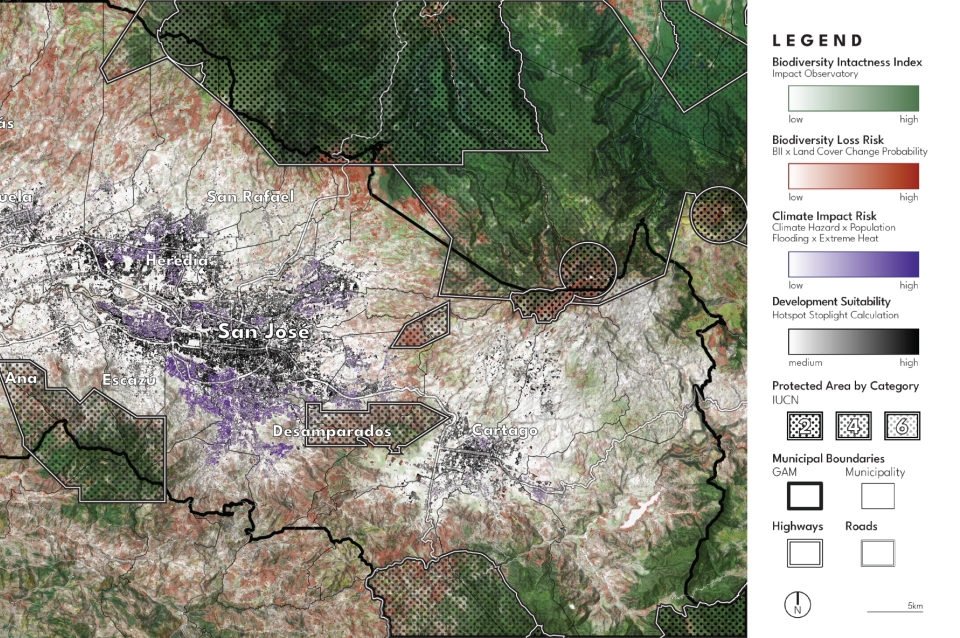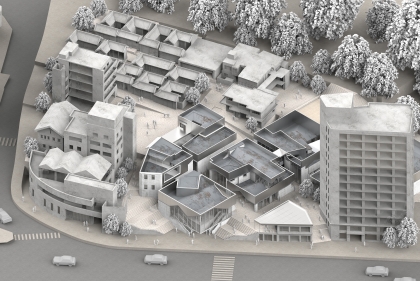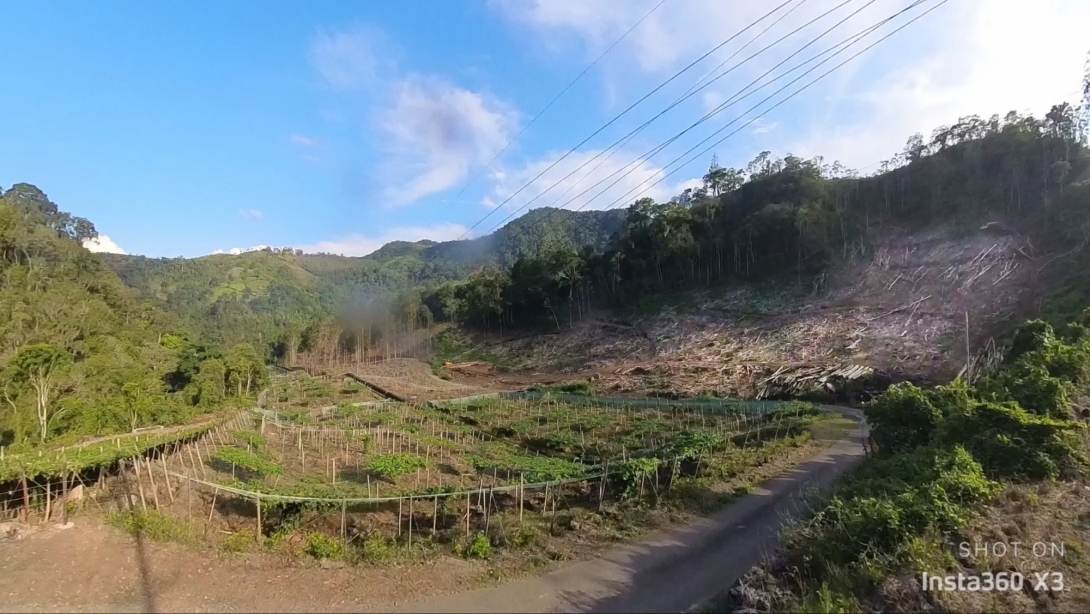February 27, 2025
Sounding a Warning for Urban Biodiversity
By Jared Brey

Hotspot Stoplight uses a series of scripts to connect geospatial data to machine-learning models that classify land types and predict changes in land cover. This map shows our risk and suitability indices for Costa Rica in a disaggregated way, with biodiversity loss risk in red, climate impact risk in purple and urban development suitability in black. Each of these indices varies across space, which is shown in this visualization through the varying opacity of each color.
Close
Hotspot Stoplight uses a series of scripts to connect geospatial data to machine-learning models that classify land types and predict changes in land cover. This map shows our risk and suitability indices for Costa Rica in a disaggregated way, with biodiversity loss risk in red, climate impact risk in purple and urban development suitability in black. Each of these indices varies across space, which is shown in this visualization through the varying opacity of each color.
This map shows the suitability of urban development, based on predicted probability of urban land cover minus biodiversity loss risk, climate impact risk, and biodiversity intactness. Different segments of the spectrum represent potential suitability for different urban strategies.
The team used a clustering-based analysis on the components of each index to pinpoint zones of potential suitability for different urban strategies. The ground-truthing process involved visiting dozens of sites identified by this process to investigate the accuracy the approach.
The Weitzman team's ground-truthing of the Hotspot Spotlight tool involved visits various sites across the San José.

 View Slideshow
View Slideshow



